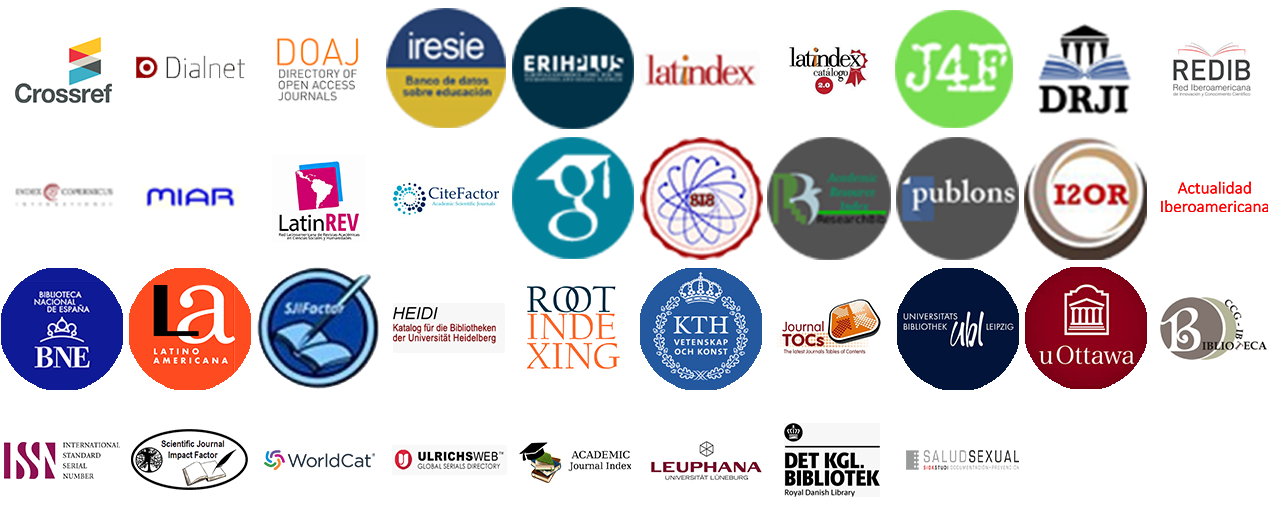A proposal for medication control in people with motor and/or cognitive disabilities through the Internet of Things
DOI:
https://doi.org/10.36825/RITI.12.26.005Keywords:
IoT, 3D Printing, Arduino, 3D Modeling, Internet of Things, FlutterAbstract
Currently, advancements in automation have led to the creation of technological innovations and control techniques for Internet-connected devices that are applied in various fields such as industry, medicine, and more. In the healthcare sector, automation plays a crucial role as it enhances patients’ quality of life. The Internet of Things (IoT) plays a key role in automation as it enables smart devices to perform their functions online. This article presents a prototype categorized under the Internet of Medical Things, designed to assist elderly individuals with motor and/or cognitive impairments by reminding them to take their medication. The device dispenses the pill to the patient when they bring their wrist close to the apparatus, using an RFID (Radio Frequency Identification) bracelet, which activates the device and logs the information in a database on a server. Additionally, a cross-platform mobile application was developed using the Flutter framework, allowing the device to be configured, the doctor to update the prescription, and the patient’s family to check whether the medication has been taken or to send an alert if it has not.
References
Aguilar-Calderón, J. A., Tripp-Barba, C., Zaldívar-Colado, A., Aguilar-Calderón, P. A. (2022). Requirements Engineering for Internet of Things (loT) Software Systems Development: A Systematic Mapping Study. Applied Sciences. 12 (15), 1-23. https://doi.org/10.3390/app12157582
RedHat. (2019). ¿Qué es el Internet de las cosas? https://www.redhat.com/es/topics/internet-of-things/what-is-iot
Ashton, K. (2009). That ‘Internet of Things’ Thing. https://www.rfidjournal.com/expert-views/that-internet-of-things-thing/73881/
Zetina Lozano, M. G. (1999). Conceptualización del proceso de envejecimiento. Papeles de población, 5 (19), 23–41. https://www.redalyc.org/pdf/112/11201903.pdf
Patil, A., Darshan B.G, Ashoka, D. V., Nethravathi, B. (2020). IoT Based Medicine Dispenser International Journal of Engineering Research and Technology, 8 (15), 152-155. https://doi.org/10.17577/IJERTCONV8IS15034
Philip, J., Abraham, F. M., Giboy, K. K., Feslina, B. J., Rajan, T., (2020). Automatic Medicine Dispenser using IoT. International Journal of Engineering Research and Technology, 9 (8), 342-349.
Pang, Z., Tian, J., Chen, Q. (2014). Intelligent packaging and intelligent medicine box for medication management towards the Internet-of-Things. 16th International Conference on Advanced Communication Technology, Pyeongchang, Korea (South). https://doi.org/10.1109/icact.2014.6779193
Singh, G. (2022). IoT pill dispenser. Instructables. https://www.instructables.com/IoT-Pill-Dispenser/
Tele2 IoT (2022). IoT and health: Keeping track of your meds. Tele2 IoT. https://tele2iot.com/case/iot-and-health-keeping-track-of-your-meds/
Harshitha, V., Sandeep, K., Swasthika Jain, T. J. (2020). An interactive pill box using IOT. International Journal of Engineering and Advanced Technology, 9 (3), 2436–2438. https://doi.org/10.35940/ijeat.c5742.029320
Colimba Pozo, G. E. (2023). Diseño De Un Prototipo Dispensador Automático de Pastillas Para Personas de la Tercera Edad [Tesis de Grado]. Universidad Técnica del Norte. Ibarra, Ecuador. https://repositorio.utn.edu.ec/handle/123456789/15278
Soto Valqui L. A., Valdez Jiménez, W. (2023). Diseño de un prototipo domótico asistencial para adultos mayores, con sistemas embebidos para conectarse con plataformas basadas en Internet of Things (IOT) [Tesis de Grado]. Universidad Tecnológica del Perú. Lima Perú. https://hdl.handle.net/20.500.12867/7522
Calderón Pérez, J., Díaz Esquén A. R. (2023). Dispensador inteligente para mejorar el cumplimiento farmacológico en adultos mayores hipertensos [Tesis de Grado]. Universidad Nacional Pedro Ruiz Gallo. Lambayeque, Perú. https://hdl.handle.net/20.500.12893/11475
Cuevas-Chávez, J. I., Lúa Madrigal, O., González Ponce, C. F., Sánchez-Salazar, A. (2024). Desarrollo de un pastillero programable para facilitar el recordatorio de los horarios de ingesta de medicamentos controlados. Revista Ingeniantes, 3 (1), 113-120. https://citt.itsm.edu.mx/ingeniantes/articulos/ingeniantes11no1vol3/15.pdf
Alarcón Angulo, M. E., Checa Cabrera, M. A., Proaño Lapuerta, E. A., Alarcón Angulo, M. L. (2024). Soluciones tecnológicas innovadoras para la automatización de la administración de medicamentos en pacientes crónicos. Revista Dilemas Contemporáneos: Educación, Política y Valores, (1), 1-23. https://doi.org/10.46377/dilemas.v12i1.4349
Downloads
Published
How to Cite
Issue
Section
License
Copyright (c) 2024 Revista de Investigación en Tecnologías de la Información

This work is licensed under a Creative Commons Attribution-NonCommercial 4.0 International License.
Esta revista proporciona un acceso abierto a su contenido, basado en el principio de que ofrecer al público un acceso libre a las investigaciones ayuda a un mayor intercambio global del conocimiento.
El texto publicado en la Revista de Investigación en Tecnologías de la Información (RITI) se distribuye bajo la licencia Creative Commons (CC BY-NC
 ), que permite a terceros utilizar lo publicado citando a los autores del trabajo y a RITI, pero sin hacer uso del material con propósitos comerciales.
), que permite a terceros utilizar lo publicado citando a los autores del trabajo y a RITI, pero sin hacer uso del material con propósitos comerciales.



